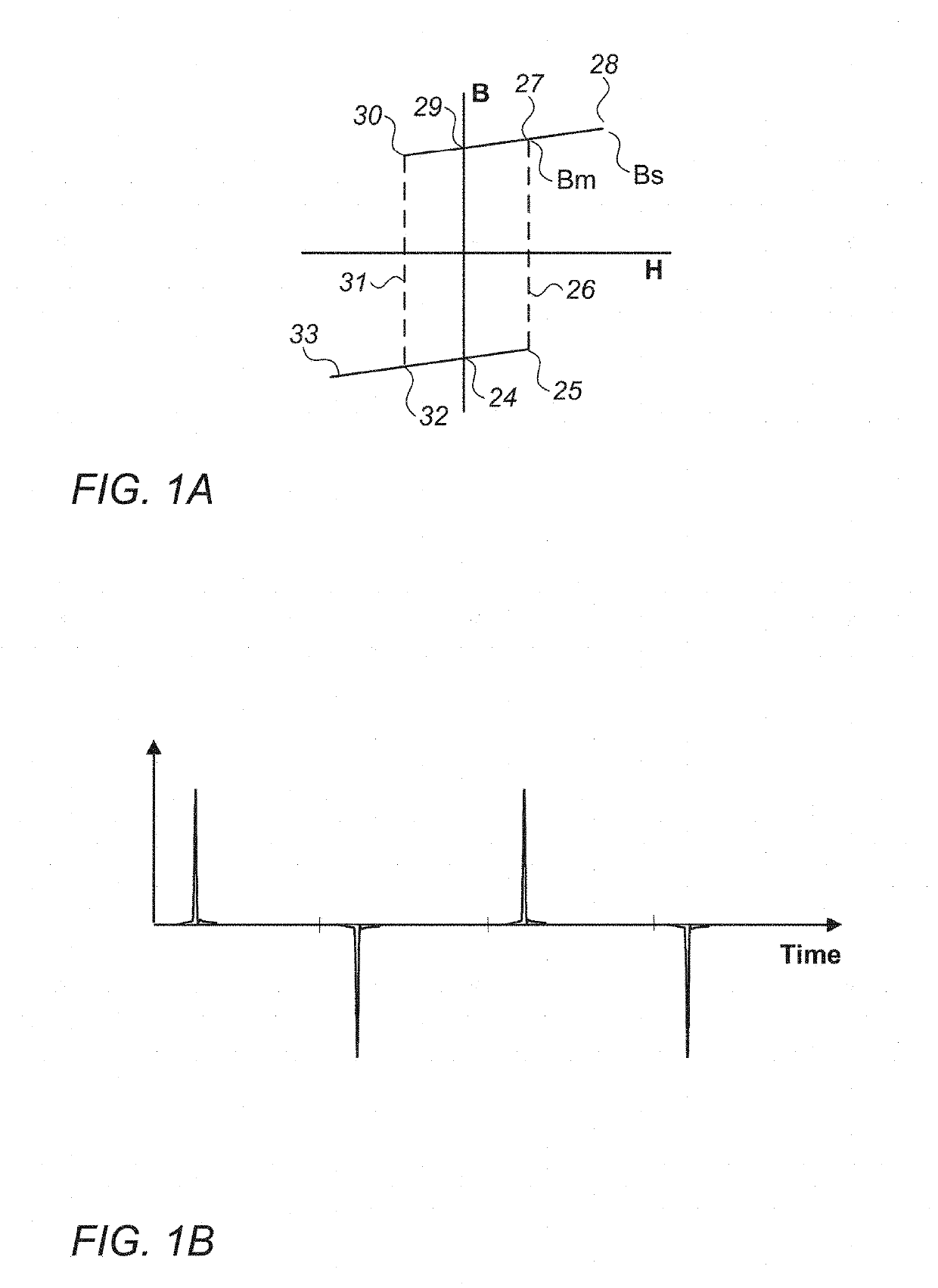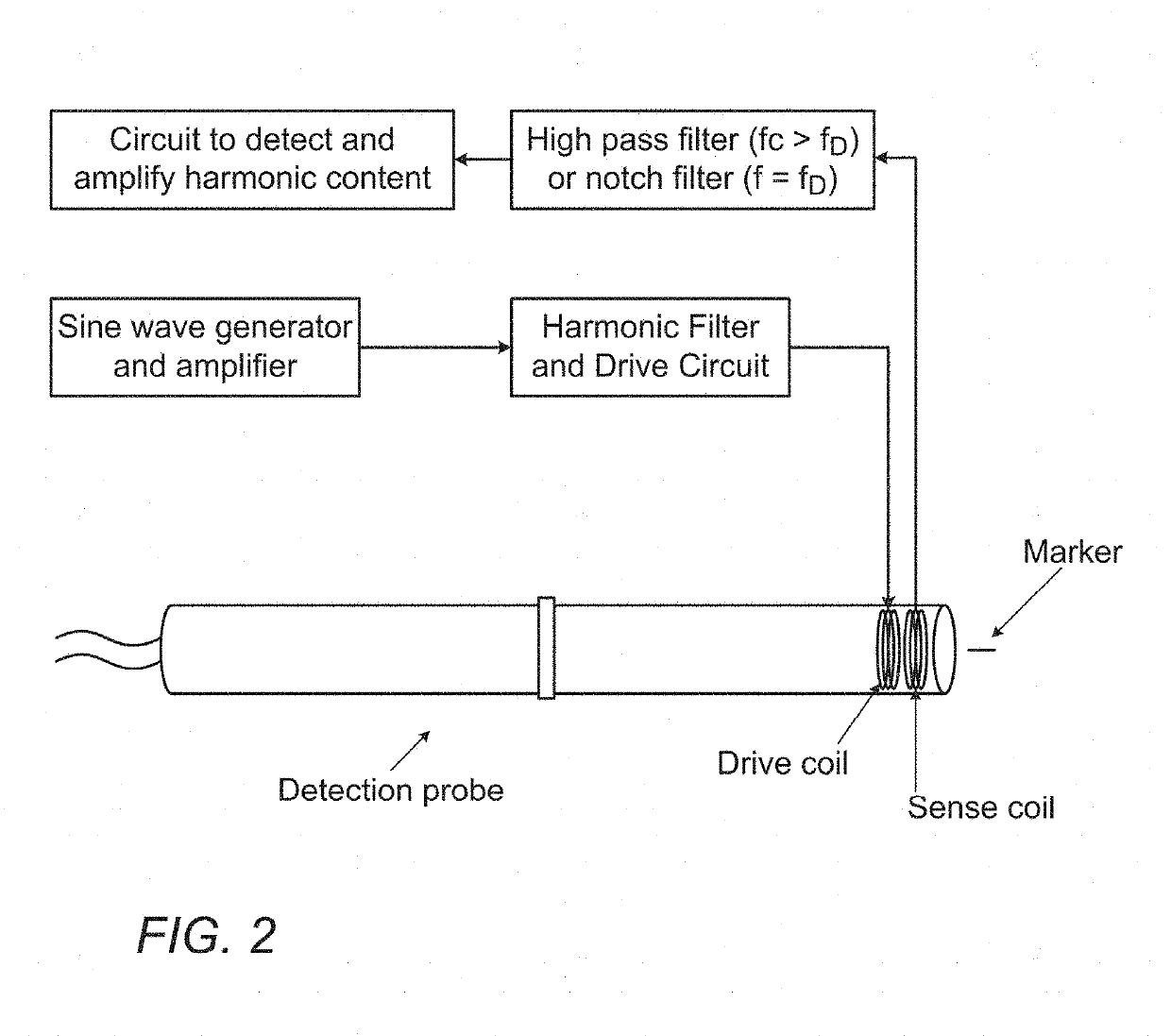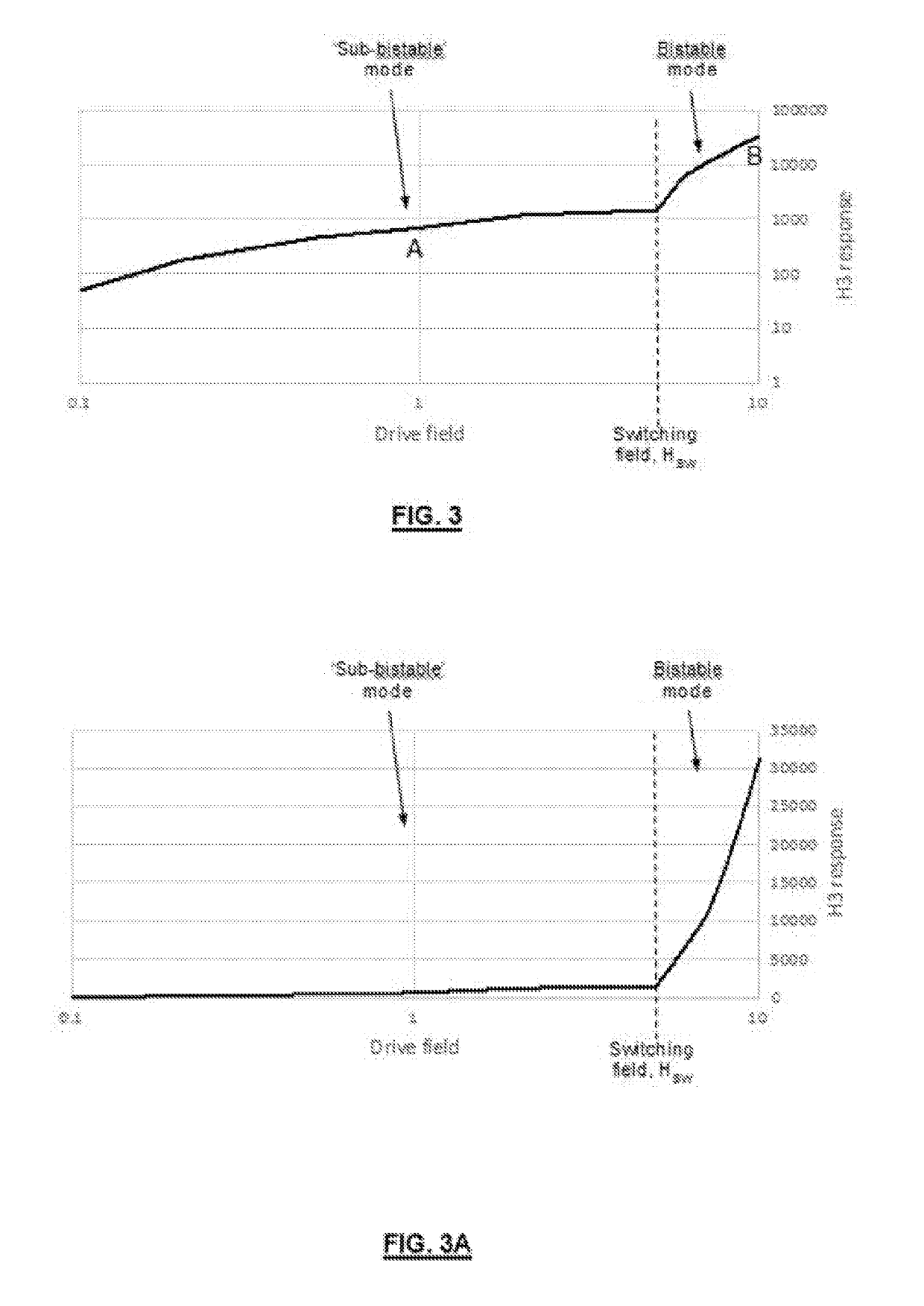Systems and Methods for Detecting Magnetic Markers for Surgical Guidance
a magnetic marker and surgical guidance technology, applied in the field of surgical guidance, can solve the problems of lack of robustness, limited system, and difficulty in setting up a radioactive seed programme in all but the largest academic hospital centers, and achieve the effect of enhancing outpu
- Summary
- Abstract
- Description
- Claims
- Application Information
AI Technical Summary
Benefits of technology
Problems solved by technology
Method used
Image
Examples
Embodiment Construction
[0061]The present invention relates to a magnetic marker that can be implanted for marking a target site in the body, and subsequently be detected and localised using a handheld probe. The invention provides a detection system and method for locating the position of the implanted marker in the body.
[0062]The marker may be implanted in a site requiring marking in the body. This may, for example, be a tumour or other lesion or site of interest in soft tissue. Examples include but are not limited to benign lesions, cancerous lesions and lymph nodes. The marker may be placed in or near a lesion or multiple markers may be placed to mark the margins or perimeter of a surgical site, for example the margins of a soft tissue sarcoma.
[0063]The detection system and method of the present invention utilises a different mode of excitation for LBJ materials that has not prior hereto been recognised. The inventors have surprisingly found that a different mode of excitation for LBJ materials incorpo...
PUM
 Login to View More
Login to View More Abstract
Description
Claims
Application Information
 Login to View More
Login to View More - R&D
- Intellectual Property
- Life Sciences
- Materials
- Tech Scout
- Unparalleled Data Quality
- Higher Quality Content
- 60% Fewer Hallucinations
Browse by: Latest US Patents, China's latest patents, Technical Efficacy Thesaurus, Application Domain, Technology Topic, Popular Technical Reports.
© 2025 PatSnap. All rights reserved.Legal|Privacy policy|Modern Slavery Act Transparency Statement|Sitemap|About US| Contact US: help@patsnap.com



